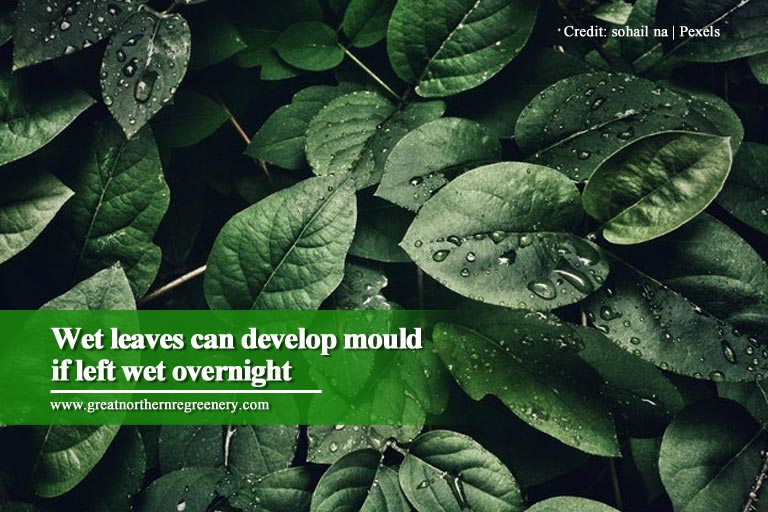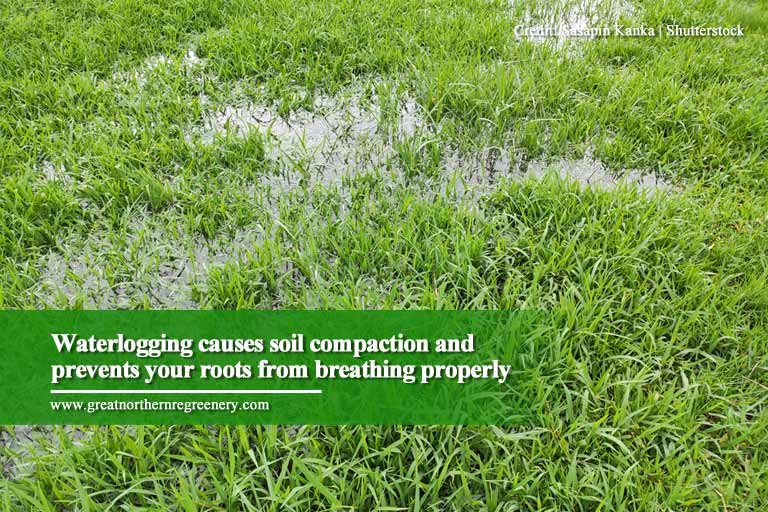Summer is the perfect time to know how to water your plants properly to keep them healthy and stress-free. We already know that a happy and healthy plant is due in part to consistent watering. However, just because it’s summer doesn’t mean you have to spoil your plants with too much water.
Your plants could drown from overwatering. Overwatered plants can’t “breathe” because the air pockets in the soil become filled with water.
Watering your plants can be tricky. Here is a guide to help ensure that your plants make it through summer healthy.
Common Misconceptions About Watering in the Summer
https://www.pexels.com/photo/person-watering-outdoor-plants-4750274/
Caption: How much is “too much”?
Credit: Karolina Grabowska | Pexels
With so much information you can get on the Internet, it’s now difficult to separate fact from fiction. Here are some common misconceptions that you have probably heard about watering your plants in the summer:
1.”Plants need 1 inch of water per week.”
While the rule of thumb is to water your plants at least 1 inch of water per week, the truth is that different plants need different amounts of water.
Your young seedlings have limited root systems so they may need daily watering, especially during the summer when the weather is sunny and hot. Trees and shrubs may only need watering during dry spells because they have more extensive root systems.
The best way to water a plant, whether it’s a tall tree or a tiny shrub, is by applying enough water to moisten the root system, and then letting the soil dry out slightly before watering again. Use a watering container and apply water slowly so the soil absorbs it completely.
2.”It’s time to water this plant because it’s wilting.”
While it’s true that wilting is a sign that the leaves are not getting enough moisture, it doesn’t mean that the soil is dry. Anything that damages the roots of your plants can cause wilting, not just the lack of water.
To find out if what caused the leaves to wilt is the lack of water, check the amount of moisture in the soil. If it’s dry, water it. If not, check for other signs of damage.
3.”Overhead watering is a no-no.”
An extremely common misconception is that overhead watering on a sunny day can scorch the leaves. It does not. There are many reasons why you should avoid watering your garden on a sunny afternoon, but “scorched leaves” is not one of them.
In fact, there are instances when you need to water your plants this way. During the summer, a fine layer of dust can build up on the leaves, reducing your plants’ ability to photosynthesize efficiently. Some insects can also be hiding in your plants. Your plants can use an overhead watering through your garden watering system during these times since it can provide some relief.
4.”Plants that can withstand drought do not need to be watered.”
This is the biggest misconception about drought-tolerant plants. These types of plants need water, too. They just have fewer watering requirements as they grow older.
During their first season of growth, your drought-tolerant plants need a consistent supply of water until their roots grow out into the surrounding soil. It is during their second and subsequent growing seasons where they only need to be watered during extended dry spells.
Morning vs. Evening: When’s the Best Time to Water My Plants?
Now your question is: “Is it okay to water plants at night?” Generally, the best time to water plants is late in the evening or early in the morning. When you water cooled soil in the evening, less water evaporates when you water your plants during the day.
However, different types of plants call for different watering times, depending on their specific requirements:
- Annual and Perennial Plants

Knowing whether your plants are annuals or perennials is a factor in deciding when to water your plants during the summer.
Annuals are plants that finish their entire lifecycle in one growing season. With annuals, you need to water them frequently, even daily because these plants have very shallow root systems and will suffer when the top few inches of soil dry out in the summer.
Perennial plants, on the other hand, have deeper root systems that allow them to survive periods of drought from one season to the next. With perennials, the best time to water them is once or twice a week. These should be watered slowly and deeply so that the water does not run off before it has time to soak into the soil.
- Vegetable Gardens
Vegetables demand consistently moist soil to produce the best crop. You can use drip irrigation, or you can place a hose at the base of your plants. However, if you are using sprinklers, water your vegetable plants early in the morning to allow the sun to dry the foliage.
- Container Plants
Rules on watering your container plants are less important during the summer. The best time to water container plants is twice a day, once in the morning to give the plants a boost, and once in the evening.
- Trees and Shrubs

With your trees and shrubs, the time of day for watering is not as important as achieving a thorough soaking. Place a hose at its base and let it run until the top 8 inches of the soil is moist. With newly planted specimens, water them at least twice a week during heatwaves.
- Wilted Plants
Wilted plants can be caused by pest and disease problems, or overwatering. However, it can also be that your plant wilts on a hot day as a way to cope with temperature, but the rebound when the evening cools off. Make sure to check first on why your plant is wilting before deciding to water them.
- Grass
The best time to water grass is after the sun is up but before 10 AM. It’s cooler at this time of day and the winds are calmer, which allows the grassroots to absorb water before it evaporates.
- Plants That Grow in Water
Because they’re already in the water, these plants do not need to be watered, at least in the literal sense. Instead, you only need to keep an eye on the water so you can top it up as it evaporates. The water must be changed every few weeks or when it becomes cloudy. You can also occasionally add a few drops of a liquid organic houseplant fertilizer to the water.
Summertime Watering: Golden Rules to Live By
To prevent your plants from dying of thirst (or overhydration) this summer, don’t forget to:
- Keep leaves dry
 Wet leaves are more prone to diseases. When left wet overnight, these leaves could grow mould. To keep your shrubs and trees disease-free, refrain from leaving their leaves wet all the time.
Wet leaves are more prone to diseases. When left wet overnight, these leaves could grow mould. To keep your shrubs and trees disease-free, refrain from leaving their leaves wet all the time.- Keep the plant evenly moist
Even distribution of water helps your plants keep cool and nourished all over. This is why you need to water around the plant so you can distribute the moisture in the entire irrigation area. Focusing on just one root point leads to one-sided root growth and poorer nutrient absorption in the soil. Use an irrigation system with a moisture sensor to save water when irrigating.
- Water thoroughly, but not always
One to two watering sessions every week is enough. When you water with this schedule, make it plenty and let it run deep. Watering often but in little amounts does not promote growth and may still even qualify as overwatering, since constant exposure to moisture will rot out the roots.
That being said, large quantities must be given in parts. Do not water in one go, as the water needs a moment before it can seep completely into the soil.
- Avoid waterlogging

Unless you’re planning on making your own personal wetland in your garden, don’t irrigate excessively and soak your plants in ground-level water. Waterlogging deprives the roots of your plants of oxygen, which they need to “breathe” properly.
- Let the water reach the roots
How much you water your plant ultimately depends on the plant’s requirements and how deep its roots are. This is why you need to make a close estimate on these measurements so you don’t under- or overwater your plants. Too little water, and your plants may never be able to receive the water. Too much…and you know what happens.
Take Good Care of Your Trees This Summer

Great Northern Regreenery’s experienced tree service experts make sure your trees are healthy and free of pests and diseases so you can benefit from them all year round. If you own a green space in Simcoe County or York Region that needs tree care, call 905-775-7444 for inquiries and appointments.





